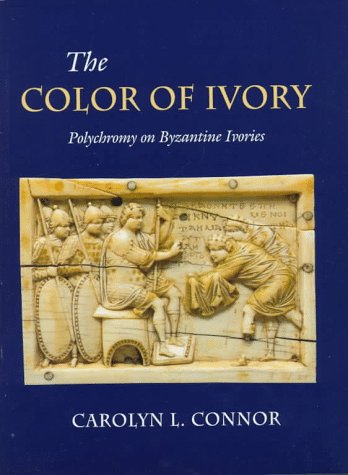Carolyn Connor shows here that Byzantine ivory carvings - often assumed to have been monochromatic - were originally brightly colored. Most ivories today show no obvious traces of paint or stain, and many scholars believe that the Byzantines preferred the aesthetic of ivory's natural, creamy color. However, Connor's close examination of one hundred Late Antique and Byzantine ivories reveals that artists frequently colored ivories in bright hues of red, blue, green, and gold. Intrigued by barely visible traces of paint or stain, Connor subjected such ivory objects as boxes, plaques, and book covers to scientific analysis. Under the microscope, she saw that their surfaces were once ablaze with color, while tests identified the actual pigments. Her findings, presented here, demonstrate that the ivories were colored and that the paint or stain - which does not adhere well to the surface of ivory - either wore off or was cleaned away. She draws on the work of archaeologists, classicists, historians, and art historians to show that this color was almost certainly original and not, as many scholars have assumed, a medieval or later addition.
The author also locates Byzantine ivories within a long tradition of colored ivory going back, for example, to a painted chest found in the tomb of the Egyptian boy-king Tutankhamen. Connor's close study and contextualizing of a significant group of ivories will reshape our thinking about color, culture, and art.
- ISBN10 0691048185
- ISBN13 9780691048185
- Publish Date 22 March 1998
- Publish Status Out of Print
- Out of Print 17 March 2015
- Publish Country US
- Imprint Princeton University Press
- Format Hardcover
- Pages 164
- Language English
- URL https://press.princeton.edu/titles/6292.html
